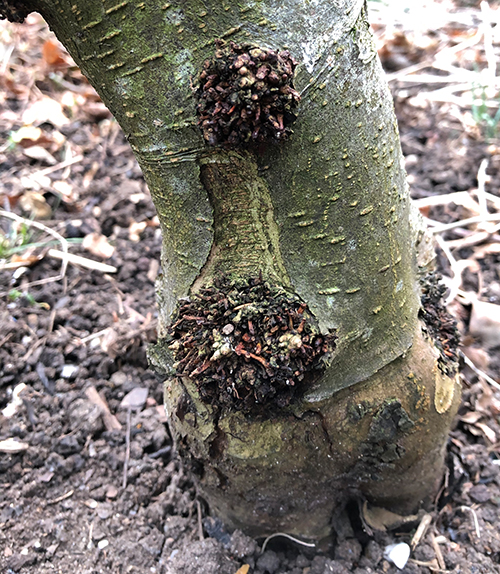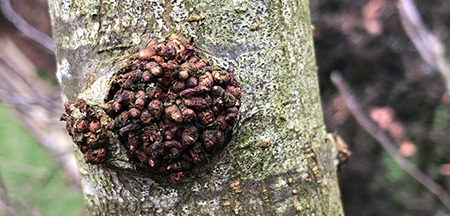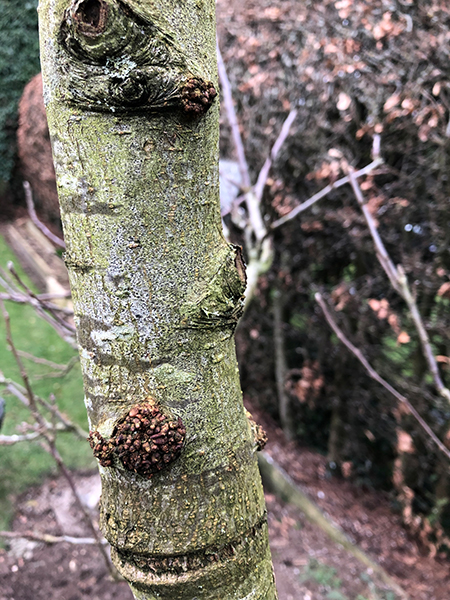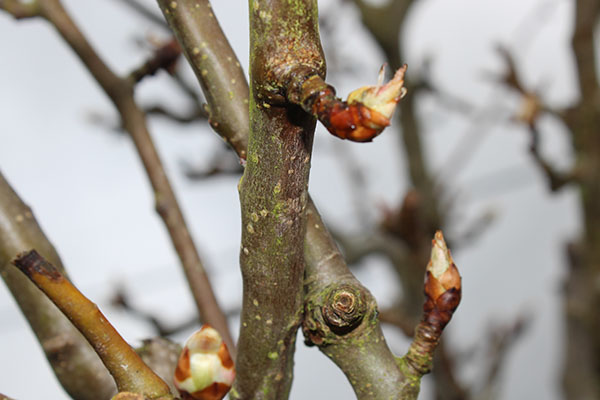That was my big gardening question this week. I even put the question out on the garden Twittersphere, which is usually a very helpful and knowledgeable place.
I didn’t get an answer, which suggests it’s not a common problem (lucky me!).
Basically, I have some rather unsightly, tumour-like growths sprouting from the trunk of my 8-year-old Braeburn apple tree.

A Google search narrowed this down to one of two possibilities: burr knots or crown galls.
Burr knots
Burr knots are not caused by a disease. They are root initials growing in the wrong place. They are most common on woody plants grown on root stock, like my apple tree. There seems to be several possible causes – low light, high humidity and dry soil – and my tree ticks all those boxes.

Burr knots cause several problems.
- They weaken the affected branch or trunk, making it more prone to breaking in high winds or from the weight of apples.
- They provide an entry point for pests and diseases, particularly woolly aphid.
- If a lot of them join up, they can damage the living tissue of the plant (phloem) that conducts nutrients around the tree.
Crown galls
Crown galls are caused by a bacteria in the soil that gets into the tree through wounds in the bark: for example, from pruning or frost damage. The bacterial disease causes knobbly tumour-like growths, usually around the base of the plant, but elsewhere as well. They usually look like warts early in development.
Crown galls can affect the growth of the tree, and the bacteria can be spread to other plants on contaminated gardening tools. The bacteria also persists in the soil for a long time.
So … burr knots or crown galls?
I’m still not completely sure, but having scrolled through dozens of pictures and websites I’m veering towards burr knots, as they look like small root projections rather than ‘knobbles’ or ‘warts’.

How to treat burr knots
So the bad news is, there’s not a lot I can do. Cutting them out risks damaging the tree even more and introducing canker.
Prevention rather than cure. I can try to prevent more from forming though. I’ve removed a couple of branches so that more light can penetrate and I will give the tree more water this summer. We’ve had two very dry summers and the tree is in a corner of the garden on a mound of clay-based soil, so I expect it has dried out too much at times.
To be honest, it has never produced many apples, so it may be on borrowed time anyway!
How to treat crown galls
Because the bacteria can spread to other plants, the tree and all its roots should be removed and destroyed, and you should wait a couple of years before planting any other susceptible plants in that soil.
So, I really hope mine are burr knots and not crown galls. To be on the safe side, I will make sure I disinfect my tools after working in that area.
If anyone can tell for sure from my pictures, please let me know!!


